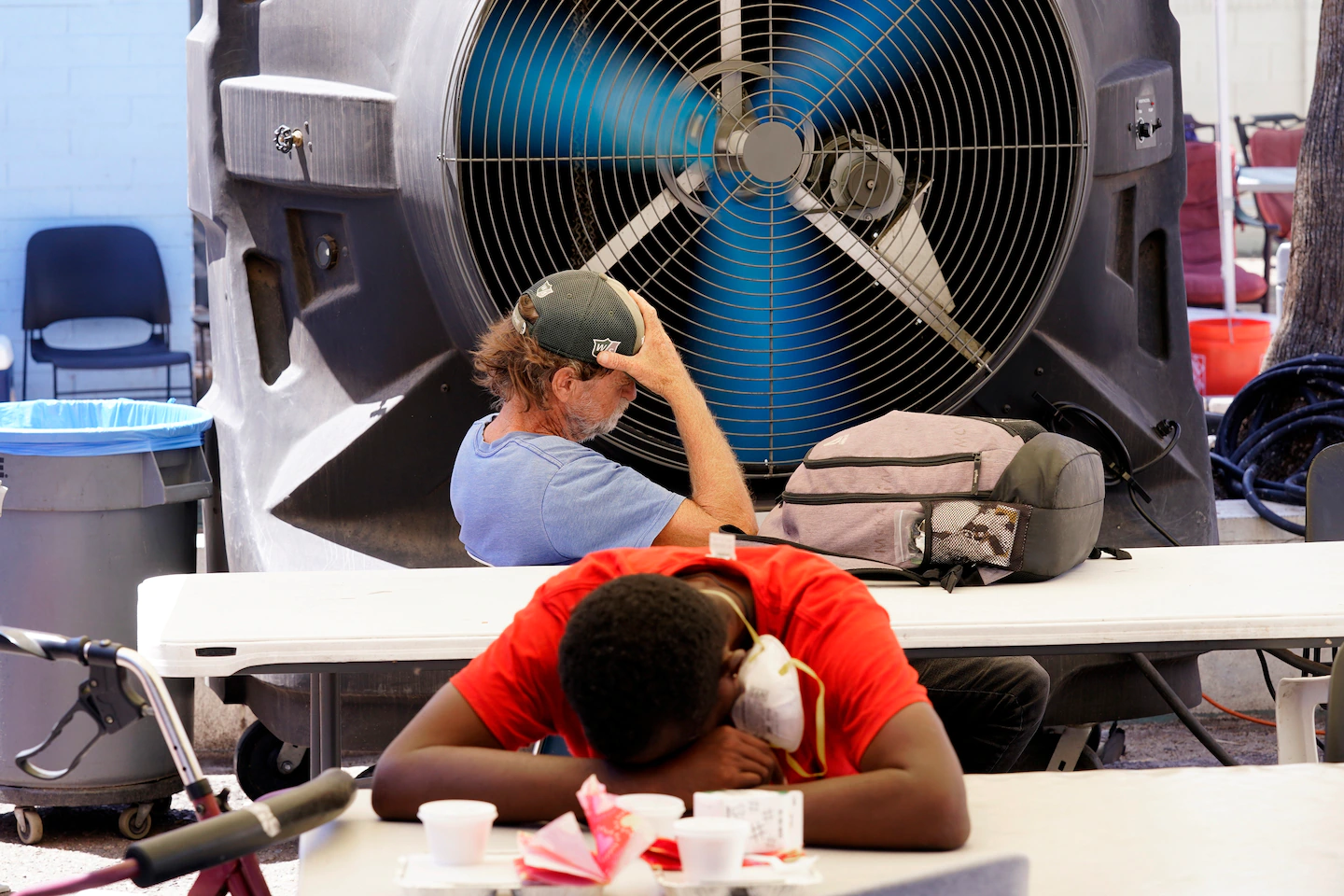[ad_1]
“Many climate and health calamities are colliding all at once,” Biden said at the time, adding, “Just like we need a unified national response to covid-19, we desperately need a unified national response to the climate crisis.”
But more than a year after the Department of Health and Human Services launched the Office of Climate Change and Health Equity, Congress has not provided any funding, forcing it to operate without any full-time staff at a time of worsening climate disasters across the country, according to interviews with four officials there.
“Right now, it is an unfunded office,” said Adm. Rachel Levine, the U.S. assistant secretary for health. “What we really need is funding to have a permanent staff.”
In his budget plan released in March, Biden requested $3 million to support eight full-time positions in the climate office. The government funding package that passed the House last week would deliver the full $3 million. So would the spending bill that the Senate Appropriations Committee unveiled on Thursday.
However, the government spending bills that lawmakers released last year also included $3 million for the climate office — until that money was stripped from the legislation at the last minute as part of an agreement brokered behind the scenes. That has fostered apprehension among officials in the climate office.
“Funding isn’t final until it’s final,” said a Health and Human Services official, who spoke on the condition of anonymity because they were not authorized to comment publicly.
Sen. Richard C. Shelby (Ala.), the top Republican on the Senate Appropriations Committee, accused Democrats on Thursday of using the spending bills to pursue the Green New Deal, the liberal proposal to eliminate the nation’s greenhouse gas emissions over 10 years while guaranteeing well-paying jobs for all.
“Senate Democrats’ bills seek to use the appropriations process to advance radical environmental and climate policies,” Shelby said in a statement, citing proposals to subsidize the solar industry and curb emissions of methane, a potent planet-warming gas, from livestock.
A spokeswoman for Republicans on the panel did not immediately respond to a request for comment.
Without full-time staff, the climate office has been loaned detailees from other federal agencies such as the Centers for Disease Control and Prevention and the National Institutes of Health. But those employees could be recalled back to their home agencies if the office does not receive funding in the coming months.
John Balbus, the interim director of the climate office, lamented that there is a debate over funding his work in the first place.
“It shouldn’t be controversial to set up an office to make sure our communities and health systems are ready to face extreme weather threats being made more frequent and common by climate change,” Balbus said. “The 200 leading health journals in the world have made it clear that climate change is the greatest threat to public health of this century. This issue needs focused attention now.”
Jonathan Parley, executive director of Climate Resolve, a Los Angeles-based nonprofit, noted that $3 million pales in comparison to what some states are spending to cope with climate impacts. For instance, California has agreed to spend $100 million over two years on establishing “community resilience hubs,” where people can cool down during a heat wave or access power during blackouts caused by an extreme weather event.
“When the state of California is spending more than the federal government on its public health protections associated with climate change,” Parley said, “it’s somewhat appalling.”
However, Levine said comparing the climate office with such state-level efforts is like “apples and oranges,” since the office is meant to coordinate work across the federal government rather than create resilience centers and related facilities.
In recent years, the medical community has increasingly recognized climate change as a leading threat to public health. The Lancet, a top medical journal, warned last year that global warming is set to become the “defining narrative of human health” — triggering food shortages, deadly disasters and disease outbreaks that would dwarf the toll of the coronavirus pandemic.
Rising temperatures have led to higher rates of heat illness, causing farmworkers to collapse in fields and elderly people to die in their homes. Smoke from wildfires has infiltrated the lungs and bloodstreams of people hundreds of miles away. Extreme droughts have caused crops to fail, triggering severe hunger and food insecurity for the world’s most vulnerable populations.
These effects have fallen hardest on low-income neighborhoods and communities of color, which are disproportionately exposed to dirty air, tainted water and other environmental threats, according to a growing body of research.
In San Jose, for instance, temperatures are 6 or 7 degrees higher in poor neighborhoods that lack tree cover, making it harder for residents to cool down during a heat wave. “We know that those differences are widening over time and having real impacts on children, seniors and others who might be vulnerable,” said San Jose Mayor Sam Liccardo, a Democrat.
In Albuquerque, officials have recorded a 17-degree difference between the coolest and hottest parts of the city on summer afternoons. The higher temperatures pose the greatest risk to homeless individuals and those who lack access to air conditioning, said Kelsey Rader, the city’s sustainability officer.
Biden has made addressing these inequities a centerpiece of his climate agenda. Under the Justice40 initiative, he has vowed to “deliver at least 40 percent of the overall benefits from federal investments in climate and clean energy to disadvantaged communities.”
In May, as part of that initiative, Health and Human Services announced the formation of a new Office of Environmental Justice. It is housed within the Office of Climate Change and Health Equity — meaning it, too, has no funding.
“Certainly front-line communities — poor communities, communities of color — always seem to get the brunt of pollution and health hazards,” said Rep. Darren Soto (D-Fla.), who participated in a recent roundtable with the climate office on protecting farmworkers from extreme heat. “So that office needs the resources to speak up for those who have lacked a voice historically.”
If given funding, officials in the climate office described an array of programs they would like to launch or expand, including efforts to reduce carbon emissions from hospitals, fund internships in community health departments and train community health workers to assess people’s vulnerability to heat or wildfire smoke.
“I’m going to be positive and optimistic that we will get funding for fiscal year 2023,” Levine said. “You know, hope springs eternal.”
[ad_2]
Source link



